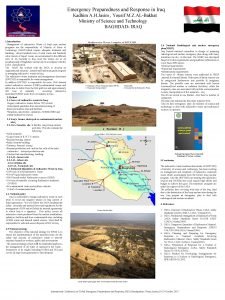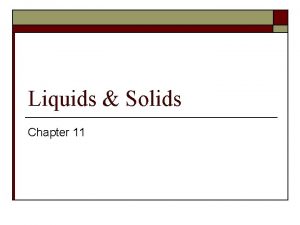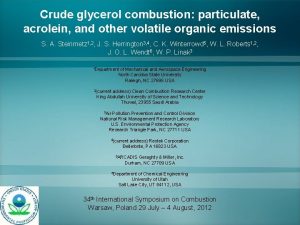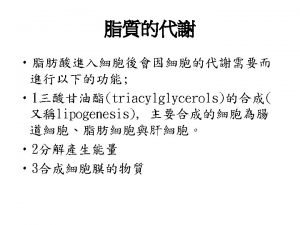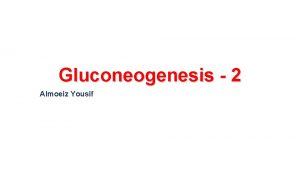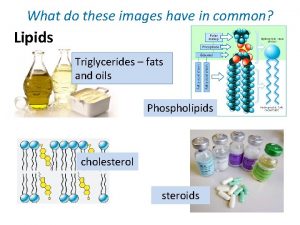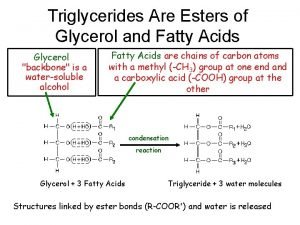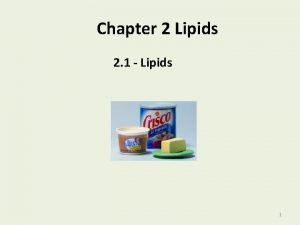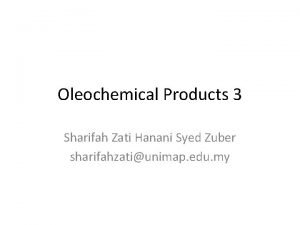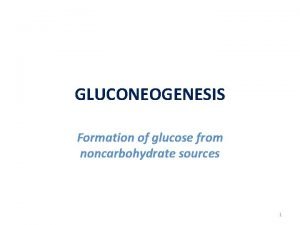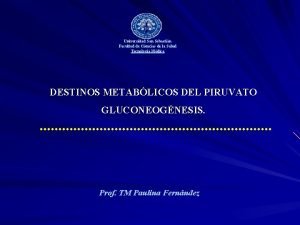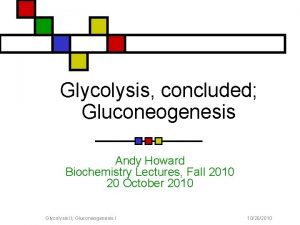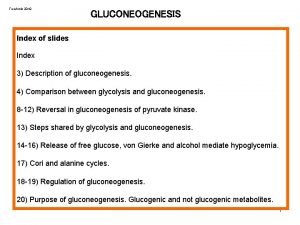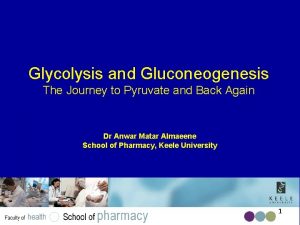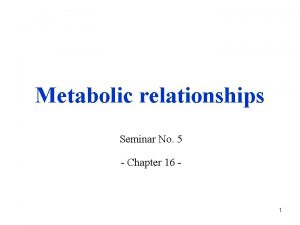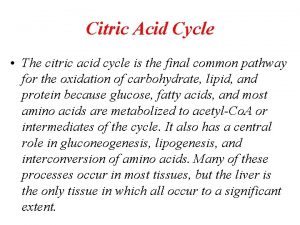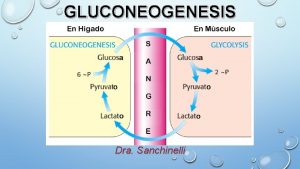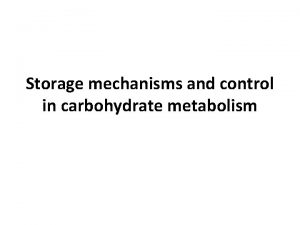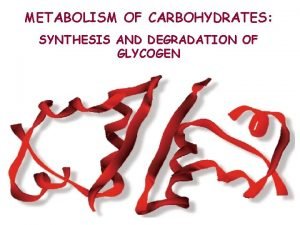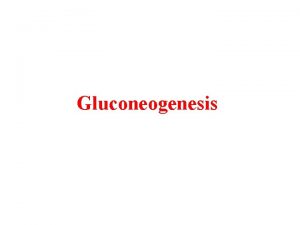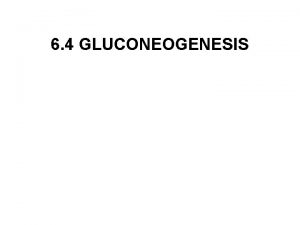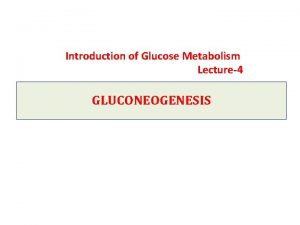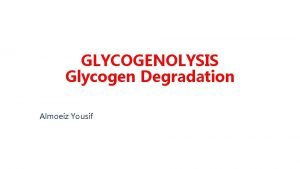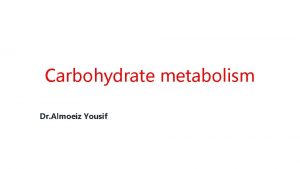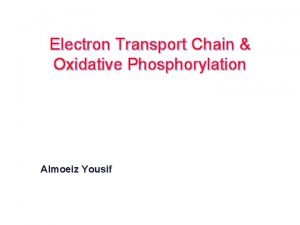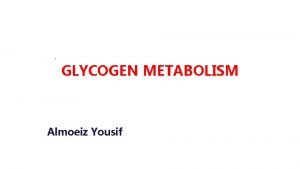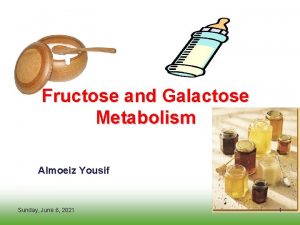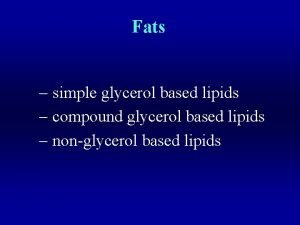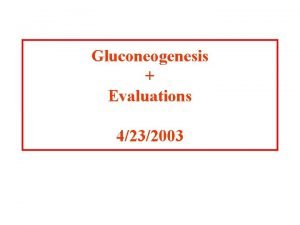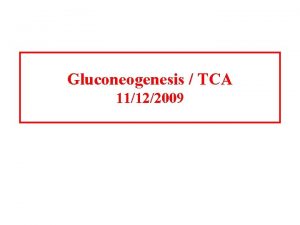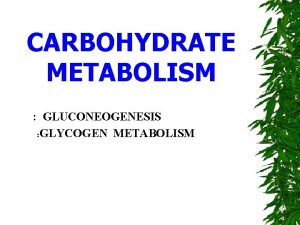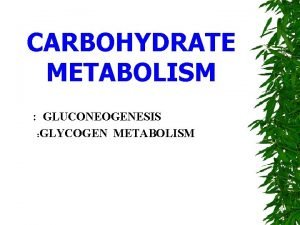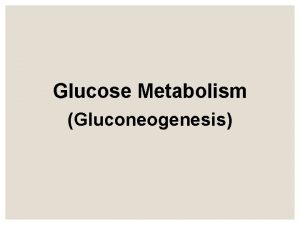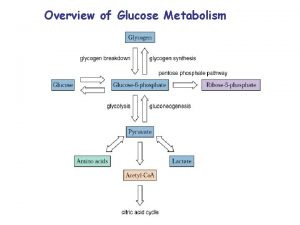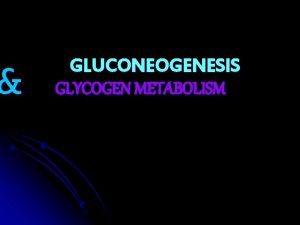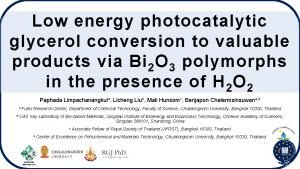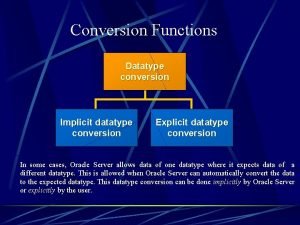Gluconeogenesis 2 Almoeiz Yousif 2 Conversion of glycerol




















- Slides: 20

Gluconeogenesis - 2 Almoeiz Yousif

2) Conversion of glycerol to glucose • Glycerol derived from the breakdown of fats is converted to dihydroxyacetone phosphate (DHAP): Sunday, November 22, 2020 2

Sunday, November 22, 2020 3

3) Glucogenic amino acids: • Are amino acids that can convert to glucose. • Some or all of the carbon atoms of these amino acids are broken down to -pyruvate or - intermediates of the TCA. Sunday, November 22, 2020 4

19 Amino Acids are Glucogenic, 14 are Purely Glucogenic Pyruvate Amino acid catabolism Sunday, November 22, 2020 Citrate Isocitrate a-ketoglutarate Succinyl-Co. A Succinate Fumarate Malate TCA Intermediates TCA oxaloacetate 5

Sunday, November 22, 2020 6

TCA intermediates are Glucogenic form glucose through oxaloacetate Sunday, November 22, 2020 7

4)Propionate • Propionate is converted to succinyl Co. A • This process requires biotin and vitamin B 12 1. Propionate+ Co. A→ Propionyl Co. A 2. Propionyl Co. A + CO 2 ---biotin ---→ D methylmalonyl Co. A 3. D methylmalonyl Co. A→L methylmalonyl Co. A 4. L methylmalonyl Co. A ---- vitamin B 12 → Succinyl Co. A Sunday, November 22, 2020 8

Reactions 2 and 4 2. Propionyl Co. A carboxylase requires biotin 4. Methylmalonyl Co. A isomerase requires vitamin B 12 Sunday, November 22, 2020 9

The Cori Cycle & The Glucose–Alanine Cycle

The Cori Cycle • It is the process by which lactate produced by muscles during strenuous anaerobic exercise is converted back to glucose through gluconeogenesis, and then returned to the tissues Sunday, November 22, 2020 11

The Cori Cycle 1. Lactate produced in muscle is transported to the liver. 2. Lactate is converted to pyruvate by Lactate Dehydrogenase Sunday, November 22, 2020 12

The Cori Cycle 3. Pyruvate is used as a substrate for gluconeogenesis 4. Glucose is returned to the muscles through the blood stream Sunday, November 22, 2020 13

Sunday, November 22, 2020 14

The Cori Cycle • Lactate – RBC – muscle Sunday, November 22, 2020 15

The Glucose–Alanine Cycle • Alanine serves as a "shuttle" for pyruvate from the muscles to the liver. • Pyruvate produced by glycolysis in muscles is transaminated to alanine. • Alanine is transported to the liver, where it is re-converted to pyruvate and used for gluconeogenesis Sunday, November 22, 2020 16

Sunday, November 22, 2020 17

Sunday, November 22, 2020 18

Significance of these two cycles • Remove lactate in muscle and RBCs • Increase blood glucose level using amino acids in special situations Sunday, November 22, 2020 19

Thank you Sunday, November 22, 2020 20
 Yousif kadhim accident
Yousif kadhim accident Specific gravity of syrup
Specific gravity of syrup Viscosity of glycerol
Viscosity of glycerol Glycerol to glucose
Glycerol to glucose Glycerol combustion
Glycerol combustion Triacylglycerol cycle
Triacylglycerol cycle Glycerol to glucose
Glycerol to glucose Cholesterol glycerol
Cholesterol glycerol Formation of triacylglycerol
Formation of triacylglycerol Glycerol fatty acid
Glycerol fatty acid Surfactant examples
Surfactant examples Noncarbohydrate precursors
Noncarbohydrate precursors Precursores de gluconeogenesis
Precursores de gluconeogenesis Cori cycle
Cori cycle Net reaction of gluconeogenesis
Net reaction of gluconeogenesis Pep to pyruvate
Pep to pyruvate Gluconeogenesis from lactate
Gluconeogenesis from lactate Krebes cycle
Krebes cycle Precursores de gluconeogenesis
Precursores de gluconeogenesis Gluconeogenesis of amino acids
Gluconeogenesis of amino acids Glucose alanine cycle
Glucose alanine cycle
